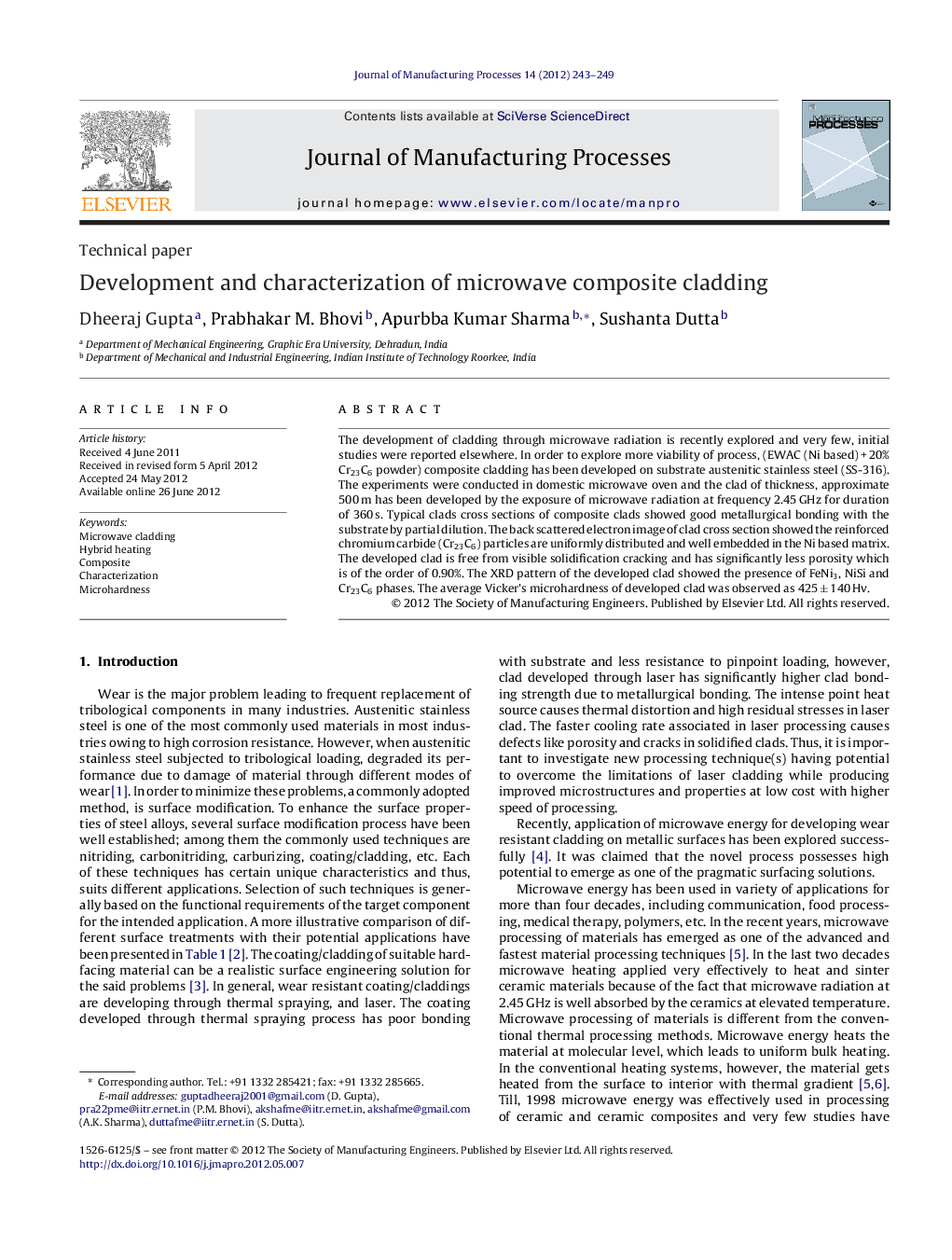| Article ID | Journal | Published Year | Pages | File Type |
|---|---|---|---|---|
| 1697196 | Journal of Manufacturing Processes | 2012 | 7 Pages |
The development of cladding through microwave radiation is recently explored and very few, initial studies were reported elsewhere. In order to explore more viability of process, (EWAC (Ni based) + 20% Cr23C6 powder) composite cladding has been developed on substrate austenitic stainless steel (SS-316). The experiments were conducted in domestic microwave oven and the clad of thickness, approximate 500 m has been developed by the exposure of microwave radiation at frequency 2.45 GHz for duration of 360 s. Typical clads cross sections of composite clads showed good metallurgical bonding with the substrate by partial dilution. The back scattered electron image of clad cross section showed the reinforced chromium carbide (Cr23C6) particles are uniformly distributed and well embedded in the Ni based matrix. The developed clad is free from visible solidification cracking and has significantly less porosity which is of the order of 0.90%. The XRD pattern of the developed clad showed the presence of FeNi3, NiSi and Cr23C6 phases. The average Vicker's microhardness of developed clad was observed as 425 ± 140 Hv.
► Domestic microwave oven at 900 W was used to develop composite clads. ► Clad matrix material is completely melted and partially got diluted to substrate. ► Chromium carbide reinforced EWAC cladding was developed using microwave energy. ► Confirms metallurgical bonding of clads to substrate. ► The clads shows absence of solidification cracks with significantly less porosity.
